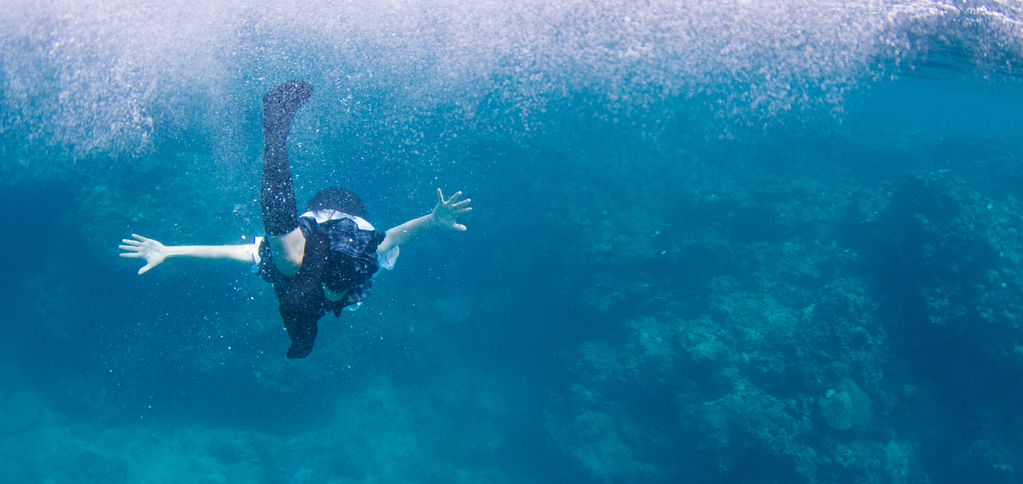
Still the Water is Naomi Kawase’s fourth feature film, and as with all of her previous features, it premiered at Cannes. Kawase expressed high hopes for the film to take out the Palme d’Or, explaining in an interview during the festival that it was her masterpiece, a kind of culmination of her work and her interests in cinema up until now. Though the latter might be true, this is certainly far from her best work, a disappointingly safe and tepid film.
Kawase’s work in cinema grew out of her apprenticeship as a photographer, before becoming a short documentary filmmaker in the early 1990s. She turned to fiction in 1997 with Suzaku, for which she became the youngest ever recipient of the Caméra d’Or. Her earlier films in particular show the influence of her artistic development as a photographer, mixing patient still shots with intimate small-scale portraits of those near and dear to her. Her early personal documentaries such as Embracing (1992) and See Heaven (1995) realise these twin subjects – they could be called landscape and portraiture – in a poetic fashion, blending diaristic home footage with more mannered documents of locations. Recurring themes in her work include the traumas of abandonment (Kawase was adopted as a child), as well as more universal explorations of nature and death, and the tie between the two.
Her newest film, is, as the director pointed out, a culmination of these themes. For the most part set on the small Japanese islands of Amami (with a brief sojourn in Tokyo), Kawase tells the story of two families linked together by two teenagers (Kyoko and Kaito) who form a romance over the course of the film. Kyoko’s mother is dying from an unnamed terminal illness, and her daughter struggles to come to terms with her death and the passing of life in concrete terms. Kaito has a strained relationship with his single mother, and finds it difficult to accept her liaisons with other men as a single woman.
This quiet family drama is set against the often-volatile island weather, which is struck by typhoons multiple times during the film. The Pacific Ocean is ever-present; multiple scenes take place on the beach or underwater, and most of the film’s best photography and sound work consists of shots of the ocean disconnected from the main narrative. Kawase aims, in her own words, to situate the film’s story as “but one part of a cycle in nature,” admirably attempting to create an equilibrium between the human drama and the rhythms of life of the Amami islands as we as the concrete jungle of Tokyo. We are reminded that human life exists as a tiny sequence within the immense cycle of nature, and the partition between life and death becomes less frightening when one comes to term with this fact.
In blending a human drama and nature, Still the Water recalls the films of Abbas Kiarostami, Flaherty’s fiction films, and of course Kawase’s previous work. While the others succeed by allowing the environment to speak for itself – to co-exist in a real equilibrium of sounds and images – Kawase tends to compartmentalise it awkwardly from the rest of the story. For all its attempts to show the two in co-existence, there is a real lack of fluidity in the way Kawase moves from the individual to nature. Characters will philosophise in none too subtle terms on the meaning of their existence or the inevitability of death while sitting on the beach before going for a swim in the ocean. This is all sound tracked by staid piano and cello music that one might hear on an Ocean Chill Out CD; the film really does tend to stray too often into a kind of New Age mysticism to really achieve the all-encompassing universalist message it pushes. This is disappointing, because the director really is capable of a far more poetic and organic way of filmmaking. However, you will have to look elsewhere in her work to find it.
Around the Staff:
| Jessica Ellicott |
